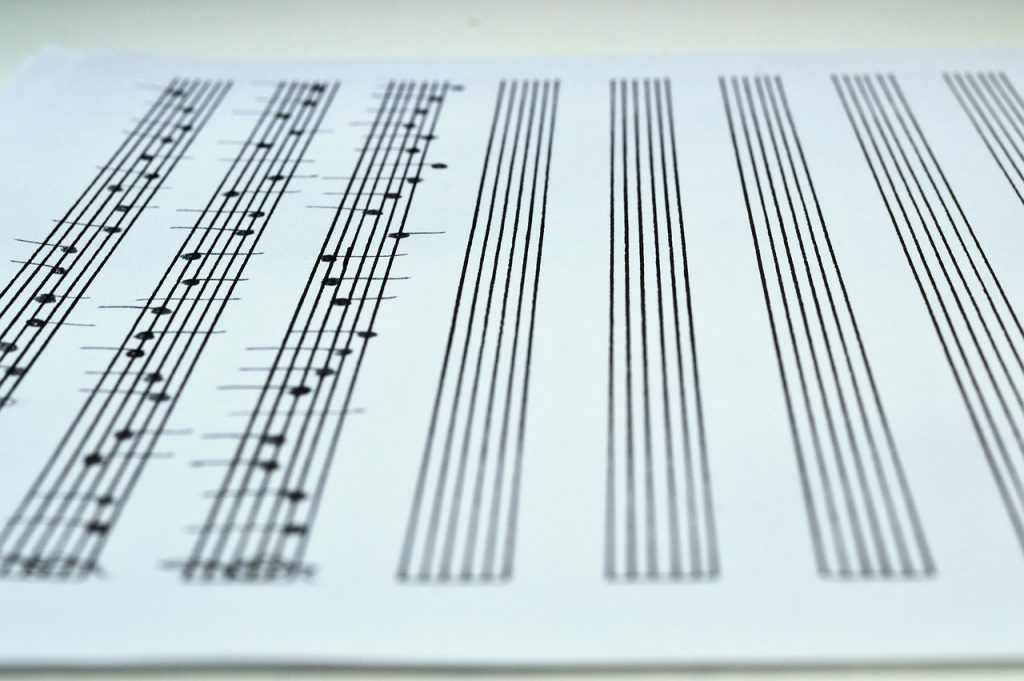How To Write A Melody For Piano, Guitar, Lyrics, Or Any Instrument: Full Guide

*This article may contain links to affiliate products & services. We have reviewed these services to try and ensure the highest quality recommendations*
Written by Cameron Mayo
Anyone who can to play a musical instrument is probably itching to compose a melody. Every musician has their own style, but the underlying process of composing a melody is basically the same.
The steps on how to come up with a melody for a song are very simple. There are some melody writing techniques based on music theory that can help you.
Here are some simple guidelines that you can follow along with an understand of how to write a melody over a chord progression.
1. Decide on a Theme
Focus on the mood that you want to produce in the melody, and make that your theme for the song. Do you want it to be sad, happy or mysterious? Get inspiration from your surroundings or maybe events in your life, anything that can help you connect will result in a powerful melody.
2. Choose a Key
Figure out a key and tempo for your music. Each key has a different effect and creates a different mood. Introduce scales and chords in the key to see how it sounds. That will help you select the right key for your melody. The tempo needs to match the overall feeling that you want to produce in your melody.
3. Know Your Chords
Learn your chords and practice them. You should know the root chord, the dominant chord which is the fifth one above the root, the subdominant chord which is the fourth one above the root and the minor chord or the six chord. You can play different progressions like pop progression or Nashville progression which contain various chords to learn them. The more you practice, the better you will become and your melody writing technique will improve.

4. Experiment With The Chords
Play chords in different order and change them around until you find the right progression. When you change from one chord to another, keep the key and tempo same and play four beats for every chord. For example, you can play C, G, Am, F, C, for four beats each time, then mix them up in a different order. Play the chords slowly and listen to the melody carefully. Eventually, you will find a progression that you are happy with.
5. Note Down Your Progression
Every time you try a different combination of chords, note them down on a piece of paper. They might sound silly or awkward in the beginning, but eventually the progression will start to appear from the different chords that you have been practicing. You need to have everything written down, so you can listen to it later. It might seem different or pleasant after a while or you might change it around a bit to make that perfect melody.
6. Make the Final Version
The melody will take some time to polish. Over time, you might be making changes to the initial staff paper, but once you are happy with everything you have done, make a final version. Take a new staff paper, and jot down your melody along with lyrics for your song. Remember that the melody writing rules are only a guide, but your final piece needs to be creative and inspirational.
Wrapping Up
Now that you have melody, it won't be long before you record and get your song finished! Read these articles about mixing and mastering:
The Best Audio Mixing And Mastering Services Online
10 Audio Mastering Tips From The Pros
7 Mixing And Mastering Mistakes You Might Make At Home
Why You Should Send Your Music To A Music Engineer
And once you're done mastering, check out our promotion packages so the world can hear your genius!
When your song is ready to go, it's time to start promoting it to potential fans! Omari has the best organic promotion services money can buy. With packages for Spotify, TikTok, Instagram, and YouTube, we will get your music the traffic and attention it deserves! Click below for more information.
SPEAK YOUR MIND
How This INDIE Artist Got Over 67,598,275 Streams On ONE Song
Join the No-Nonsense Music Marketing Newsletter to get the most valuable weekly case studies and strategies to grow your music business!



